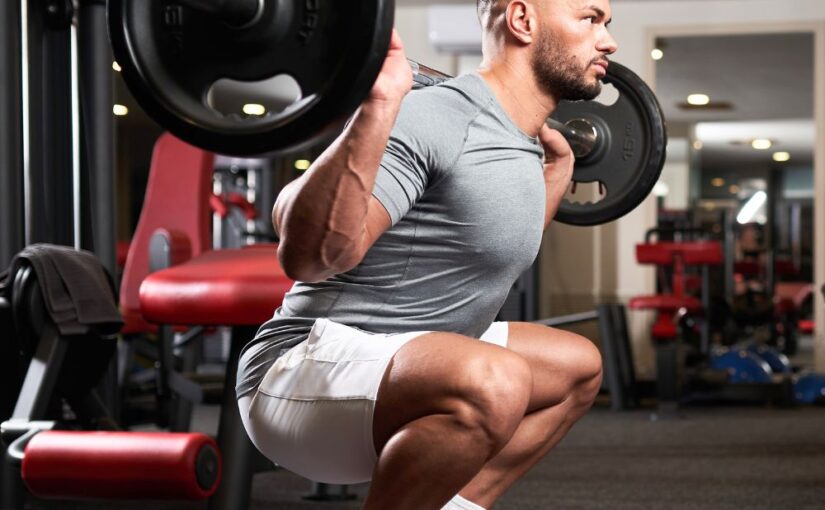The squat is one of the most fundamental exercises for building strength, power, and stability in the lower body. However, many individuals struggle with maintaining strength and control at the bottom position of the squat. Strengthening this critical phase not only enhances your overall squat performance, but also helps prevent injuries. Here’s a comprehensive guide on how to effectively strengthen the bottom of your squat.
1. Understand the Importance of the Bottom Position
The bottom of the squat is where you experience the greatest tension and require the most stability. Strengthen the bottom of your squat to improve overall depth and form, allowing for better engagement of the glutes, quadriceps, and hamstrings.
2. Incorporate Isometric Holds
Isometric holds are an effective way to build strength at the bottom of the squat. Here’s how:
- Wall Squat: Lean against a wall and slide down into a squat position, keeping your thighs parallel to the ground. Hold for 20-60 seconds. Perform 2-4 sets.
- Goblet Squat Hold: Hold a dumbbell or kettlebell close to your chest and lower into the squat position. Hold for 20-60 seconds, focusing on keeping your chest up and core engaged. Perform 2-4 sets.
3. Use Box Squats
Box squats are excellent for developing strength in the bottom position. Set a box or bench at the desired height (parallel or slightly below). Here’s how to do them:
- Stand in front of the box with your feet spaced shoulder-width apart.
- Lower yourself into a squat, keeping your weight on your heels, until you lightly touch the box.
- Pause briefly at the bottom before driving back up to standing.
This method helps reinforce the proper squat mechanics while providing a safety net as you strengthen the bottom of your squat over time.
4. Practice Pause Squats
Pause squats are another effective way to enhance strength at the bottom of your squat. Here’s how to incorporate them:
- Perform a regular squat, but when you reach the bottom position, pause for 2-3 seconds.
- Maintain tension in your muscles during the pause.
- Drive back up to standing after the pause.
5. Strengthen Supporting Muscles
Focusing on exercises that target the muscles involved in the squat can significantly improve your strength at the bottom position. Include:
- Goblet Squats: These help improve depth and stability.
- Bulgarian Split Squats: These enhance unilateral strength and stability.
- Leg Press: A great way to build leg strength with controlled motion.
6. Improve Flexibility and Mobility
Flexibility and mobility are crucial for achieving an optimal squat depth. Incorporate the following stretches into your routine:
- Hip Flexor Stretch: Kneel on one knee and push your hips forward to stretch the hip flexor of the back leg.
- Ankle Dorsiflexion Stretch: Stand facing a wall, place one foot behind the other, and bend the front knee, keeping the heel down to stretch the ankle.
- Squat to Stand: From a standing position, lower into a squat and then extend your arms overhead, stretching your hamstrings and calves.
7. Use Resistance Bands
Resistance bands can be a great tool for building strength at the bottom of your squat. Here’s how to use them:
- Banded Squats: Loop a resistance band around your thighs, just above the knees. As you squat, the band will provide resistance, forcing you to engage your glutes and outer thighs more effectively.
8. Focus on Form
Ensure you maintain proper squat form to maximize strength gains and minimize injury risk:
- Feet: Keep them shoulder-width apart with toes slightly pointed out.
- Knees: Track over your toes, not caving inward.
- Chest: Keep your chest up and back straight throughout the movement.
Conclusion
Strengthening the bottom of your squat is essential for improving your overall squat performance and preventing injuries. By incorporating isometric holds, box squats, pause squats, and targeted accessory exercises, along with improving your flexibility and mobility, you can significantly enhance your strength in this critical position. With consistent practice and proper form, you’ll find yourself squatting deeper and stronger in no time!
Frequently Asked Questions (FAQ)
The bottom position is where your body experiences the most tension and requires maximum stability. Strengthening this phase helps improve overall squat performance, depth, and injury prevention.
You can incorporate focused exercises like pause squats or isometric holds 1–2 times per week, depending on your training goals and recovery capacity.
Limited mobility may be the issue. Work on improving flexibility in your hips, ankles, and hamstrings with targeted stretches like the squat-to-stand or ankle dorsiflexion stretch.
No—box squats are valuable for all levels. They help reinforce proper mechanics and can be used to develop control and strength at the bottom position.
Yes, resistance bands add external tension that activates supporting muscles like the glutes and outer thighs, especially useful for strengthening the bottom of your squat.
Recommended Gear to Help Strengthen the Bottom of Your Squat
If you’re aiming to enhance your squat routine and are considering squat-focused equipment, check out the following accessories. These may help you train more safely and effectively—especially when targeting the bottom of your squat.
Squat Stands – A compact and adjustable solution for home gyms that supports safe barbell squats without taking up much space.
Squat Racks – Provides stability and safety during barbell workouts, ideal for progressing with heavier weights.
Power Cages – A full-frame option that offers maximum safety, versatility, and support for all squat variations.
Resistance Bands – Great for building strength at the bottom of your squat and activating supporting muscles.
Barbell Set – A solid barbell with adjustable plates allows for progressive overload as your squat strength improves.
Affiliate Disclaimer
The above links are affiliate links. If you purchase through these links, we may earn a small commission at no extra cost to you.

